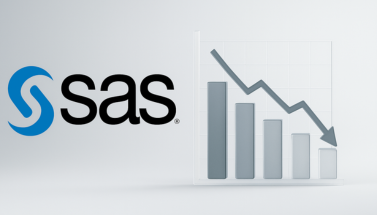
- by Handson
- April 17, 2025
How to Become a Clinical SAS Programmer in 2025: Career Path, Skills & Growth
The clinical research industry is booming, and with it comes a rising demand for skilled SAS programmers who can manage, analyze, and report clinical trial data. If you're wondering how to become a Clinical SAS programmer, 2025 is the perfect time to start. Whether you're a fresh graduate or a working professional planning a career shift, this field offers stability, global demand, and rewarding growth opportunities.
This article breaks down everything you need to know—skills required, career path, certifications, and where to start your training.
What Does a Clinical SAS Programmer Do?
A Clinical SAS programmer uses SAS (Statistical Analysis System) software to work with clinical trial data. Their primary role involves:
-
Writing code to clean, analyze, and format clinical data
-
Creating datasets that follow CDISC standards (like SDTM and ADaM)
-
Generating TLFs (Tables, Listings, and Figures) for regulatory submissions
-
Supporting biostatisticians and clinical research teams
Their work ensures that clinical data is accurate, compliant, and submission-ready for regulatory bodies like the FDA or EMA.
How to Become a Clinical SAS Programmer in 2025
Here’s a step-by-step guide for building a clinical SAS career:
1. Start with Base SAS Programming
This is where every SAS programmer begins. Base SAS programming teaches you how to:
-
Import and export datasets
-
Clean and manipulate raw data
-
Apply data steps and PROC procedures
-
Understand SAS libraries, formats, and functions
Without mastering Base SAS, it's impossible to move confidently into the clinical domain.
Enroll in a well-structured Clinical SAS course that includes comprehensive Base SAS training as a foundation.
2. Understand Clinical Data and Trial Standards
Once you’re comfortable with Base SAS, it’s time to learn the structure of clinical data:
-
SDTM (Study Data Tabulation Model): Used to organize collected data
-
ADaM (Analysis Data Model): Prepares analysis-ready datasets
-
TLFs: The visual and tabular representation of analysis
Familiarity with ICH-GCP guidelines and clinical trial phases is also essential for working in this domain.
3. Work on Real-World Projects
Hands-on experience is what separates job-ready candidates from beginners. Look for Clinical SAS training that includes:
-
Mock clinical studies
-
Case-based assignments
-
Resume-building with real project experience
This not only boosts your confidence but also gives you relevant talking points during interviews.
4. Earn SAS Global Certifications
Certifications help validate your skills and increase your visibility in the job market. Some popular options include:
-
SAS Certified Base Programmer for SAS 9
-
SAS Certified Clinical Trials Programmer
-
SAS Advanced Programming Certification
These are globally recognized and often required by hiring managers in the pharmaceutical and CRO space.
5. Apply for SAS Jobs in Clinical Research
Once trained and certified, you can start applying for roles like:
-
Clinical SAS Programmer
-
Statistical Programmer
-
Clinical Data Analyst
-
SAS Programmer (CRO/Pharma)
Make sure your resume highlights:
-
Base SAS and clinical SAS expertise
-
Familiarity with CDISC standards
-
Tools like SAS/SQL, SAS/MACRO, and SAS/GRAPH
-
Any projects or mock trials you've completed
Why 2025 Is the Right Time to Enter This Field
The global clinical trials market is expanding rapidly. With the integration of real-world evidence, decentralized trials, and regulatory digitization, the need for certified SAS programmers in clinical research has never been greater.
Companies are hiring professionals who:
-
Can work with regulatory-compliant datasets
-
Understand data privacy and audit requirements
-
Have verifiable SAS skills and certifications
So, how to become a Clinical SAS programmer in 2025? Start with Base SAS programming, build expertise in clinical data standards, and gain hands-on experience through a solid Clinical SAS course. Earning SAS global certifications will further strengthen your profile and open doors to a range of high-impact roles in the clinical research industry.
Explore your training options and begin your journey toward a thriving, future-proof clinical SAS career. Start learning today with industry-focused SAS training that prepares you for real-world success.






